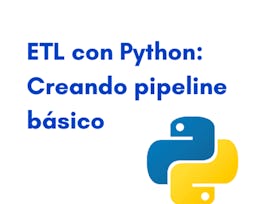This course introduces blockchain security, including a description of how the blockchain works at each level of the blockchain ecosystem. The instructor begins with the building blocks that create the structure of blockchain, the cryptography that it uses for security, and the role of hash functions in the blockchain and how they can be attacked. In the next module, the instructor describes what blockchain consensus is, why it’s needed, its underlying theory (Byzantine Fault Tolerance and Security via Scarcity), some of the common consensus algorithms, and the security issues inherent to each variant. The course progresses with a module that describes how blocks are created, the nodes and network that make up the blockchain ecosystem, and examples of various attacks that can be made on their security. Next the focus is on smart contracts and how their security can be compromised with vulnerabilities created by common programming errors during contract development, including in Ethereum, the most commonly used smart contract platform. Finally, the course wraps up with discussions of distributed ledger architectures that are alternatives to blockchain, second-level blockchain protocols, and advanced cryptography in blockchain.


Blockchain Security
Taught in English
Some content may not be translated
7,466 already enrolled
(35 reviews)
Details to know

Add to your LinkedIn profile
6 quizzes
See how employees at top companies are mastering in-demand skills


Earn a career certificate
Add this credential to your LinkedIn profile, resume, or CV
Share it on social media and in your performance review

There are 5 modules in this course
This module introduces blockchain and discusses the security of the cryptography that it uses. It describes how the components of the blockchain are put together, how cryptography is used in blockchain technology, and how public-key cryptography and hash functions are used in blockchain, as well as their security considerations.
What's included
20 videos1 quiz
This module introduces consensus algorithms and discusses the security of the most common variants. Consensus algorithms are essential to a distributed, decentralized ledger, where a network of nodes must agree on an official version of the ledger without a central authority. This course describes the underlying principles of consensus algorithms, how two of the primary consensus algorithms work under the hood and how they can be attacked.
What's included
20 videos1 quiz
This module discusses the ecosystem where the blockchain runs (the nodes and network) and its security. After understanding the different components of the blockchain, it is possible to discuss its security as a whole. This course investigates how blocks are created in the blockchain (and how block creation can be attacked) as well as discussing attacks targeting blockchain nodes and the network that ties them together and enables communication.
What's included
18 videos1 quiz
This module introduces smart contracts and discusses some of the most common programming errors made in smart contract development. Smart contract platforms are an extension of the original blockchain design, enabling fully functional programs to run “on the blockchain.” This course describes what a smart contract is and explores programming vulnerabilities that exist because a smart contract is a program, runs on a blockchain or is implemented on the Ethereum smart contract platform.
What's included
21 videos1 quiz
This module goes beyond the basic blockchain to discuss other distributed ledger architectures, advanced cryptographic protections, and blockchain extensions like sidechains and second-layer protocols. It discusses how the blockchain protocol can be replaced (using different underlying architectures), expanded (with second-layer protocols) or improved (using advanced cryptographic primitives) to overcome some of the limitations of blockchain technology.
What's included
14 videos2 quizzes
Instructor

Offered by
Recommended if you're interested in Computer Security and Networks

Coursera Project Network

Coursera Project Network

EIT Digital
Why people choose Coursera for their career




Learner reviews
Showing 3 of 35
35 reviews
- 5 stars
80%
- 4 stars
8.57%
- 3 stars
5.71%
- 2 stars
0%
- 1 star
5.71%
New to Computer Security and Networks? Start here.

Open new doors with Coursera Plus
Unlimited access to 7,000+ world-class courses, hands-on projects, and job-ready certificate programs - all included in your subscription
Advance your career with an online degree
Earn a degree from world-class universities - 100% online
Join over 3,400 global companies that choose Coursera for Business
Upskill your employees to excel in the digital economy
Frequently asked questions
Access to lectures and assignments depends on your type of enrollment. If you take a course in audit mode, you will be able to see most course materials for free. To access graded assignments and to earn a Certificate, you will need to purchase the Certificate experience, during or after your audit. If you don't see the audit option:
The course may not offer an audit option. You can try a Free Trial instead, or apply for Financial Aid.
The course may offer 'Full Course, No Certificate' instead. This option lets you see all course materials, submit required assessments, and get a final grade. This also means that you will not be able to purchase a Certificate experience.
When you enroll in the course, you get access to all of the courses in the Specialization, and you earn a certificate when you complete the work. Your electronic Certificate will be added to your Accomplishments page - from there, you can print your Certificate or add it to your LinkedIn profile. If you only want to read and view the course content, you can audit the course for free.
If you subscribed, you get a 7-day free trial during which you can cancel at no penalty. After that, we don’t give refunds, but you can cancel your subscription at any time. See our full refund policy.



